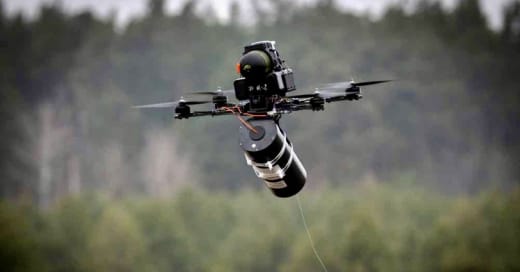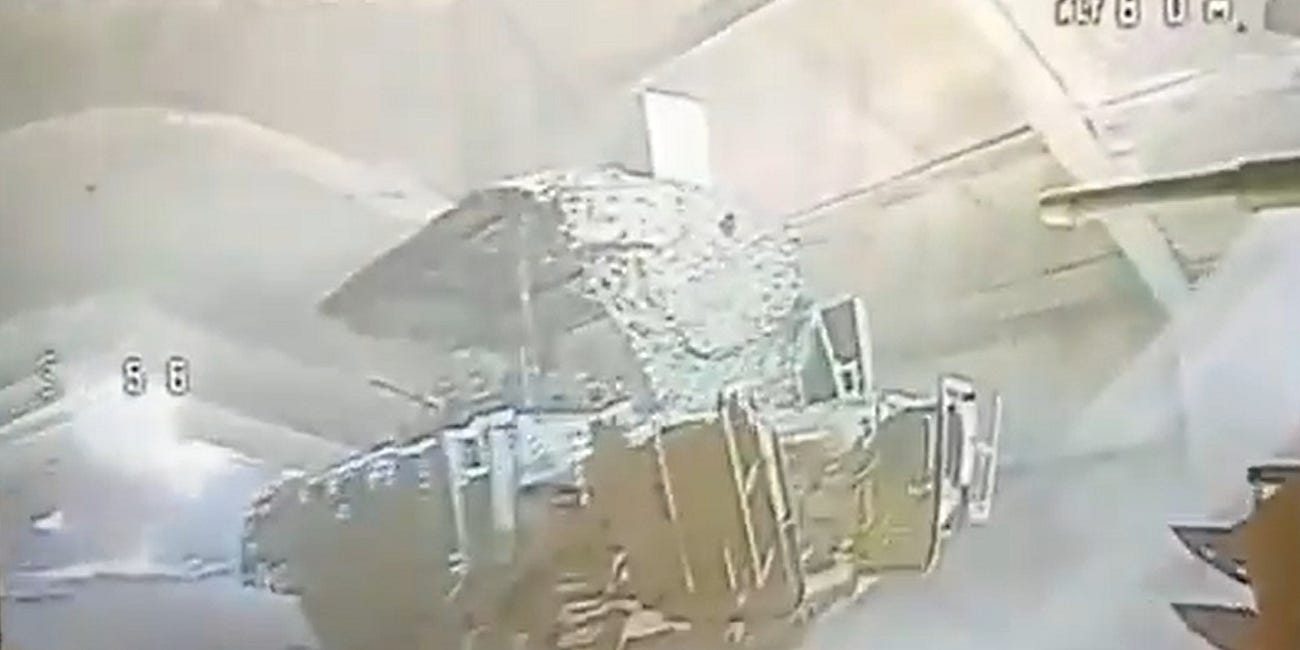Drones Followed a Russian Tank To Its Base—And Struck
Fiber-optic drones slip through open doors
That’s the best advice anyone can offer vehicle crews on either side of Russia’s wider war on Ukraine as fiber-optic first-person-view drones proliferate—and their operators become increasingly adept at maneuvering the tiny explosive drones into the garages, barns and warehouses where crews hide their tanks, fighting vehicles and artillery between fire missions.
Structures can block the radio signals by which operators steer conventional wireless FPVs—but fiber-optic FPVs send and receive their signals along millimeters-thick but miles-long optic fibers they unspool from underslung containers.
So it’s becoming more common for fiber-optic drone crews to strike enemy vehicles while the vehicles are parked inside structures that once offered protection—but are now just pressure-cookers for exploding vehicles.
The Ukrainian 225th Assault Regiment, holding positions in northeastern Ukraine just a few miles from Tetkino, a border settlement in Russia’s Kursk Oblast, graphically illustrated this trend on or just before Saturday.
Knock knock
Some of the regiment’s fiber-optic FPVs slipped inside a warehouse sheltering a T-72 tank and several trucks, together worth millions of dollars—and blew them up. A BMD-2 fighting vehicle was parked outside, and also ate some drones.
Leaving the vehicles “standing around is unacceptable,” the regiment quipped.
The dramatic daytime strike began with careful reconnaissance. A 225th Assault Regiment surveillance drone “recorded the movement of the tank,” the regiment reported. “It was decided to observe without opening fire. As a result, this tank literally led us to the parking lot.”
The Russians could’ve prevented the indoor FPV strike by simply closing the warehouse’s doors. They didn’t—and as a consequence lost a platoon’s worth of armored vehicles and trucks … to a few five-pound drones.
Closing the doors might not have saved the Russians in the end, of course. Russian positions in Tetkino have been under intensive bombardment by Ukrainian air force Mikoyan MiG-29 fighters lobbing French-made Hammer glide bombs. It’s possible the 225th Assault Regiment could’ve passed along the warehouse’s coordinates for an eventual Hammer strike.
But MiGs and Hammers are expensive. FPV drones are cheap. Even the pricier fiber-optic models might cost just a couple thousand dollars.
Read more:
Buildings Were Once Safe Havens from Explosive Drones. Fiber-Optics Changed That.
Another day, another indoor drone strike.






